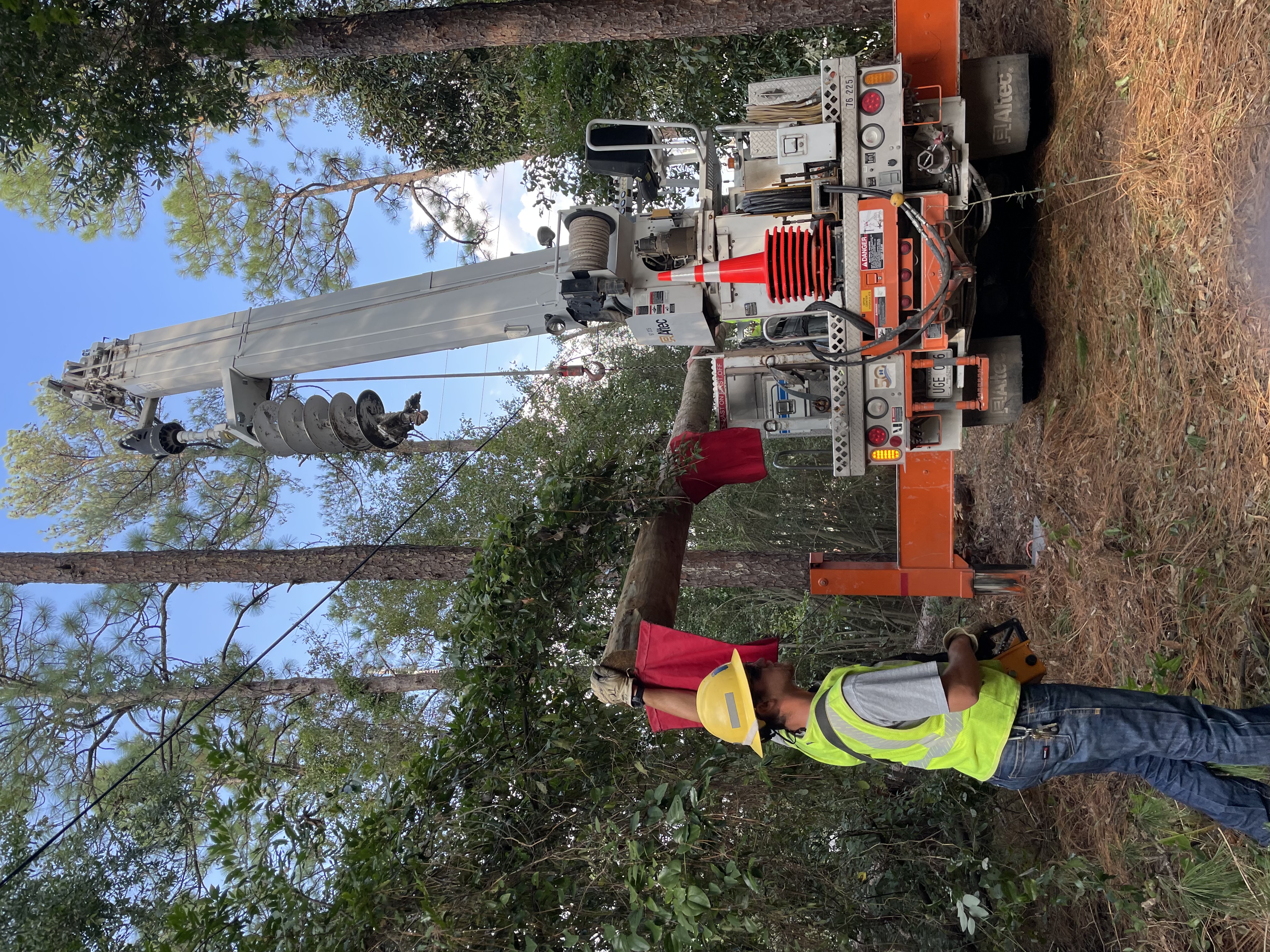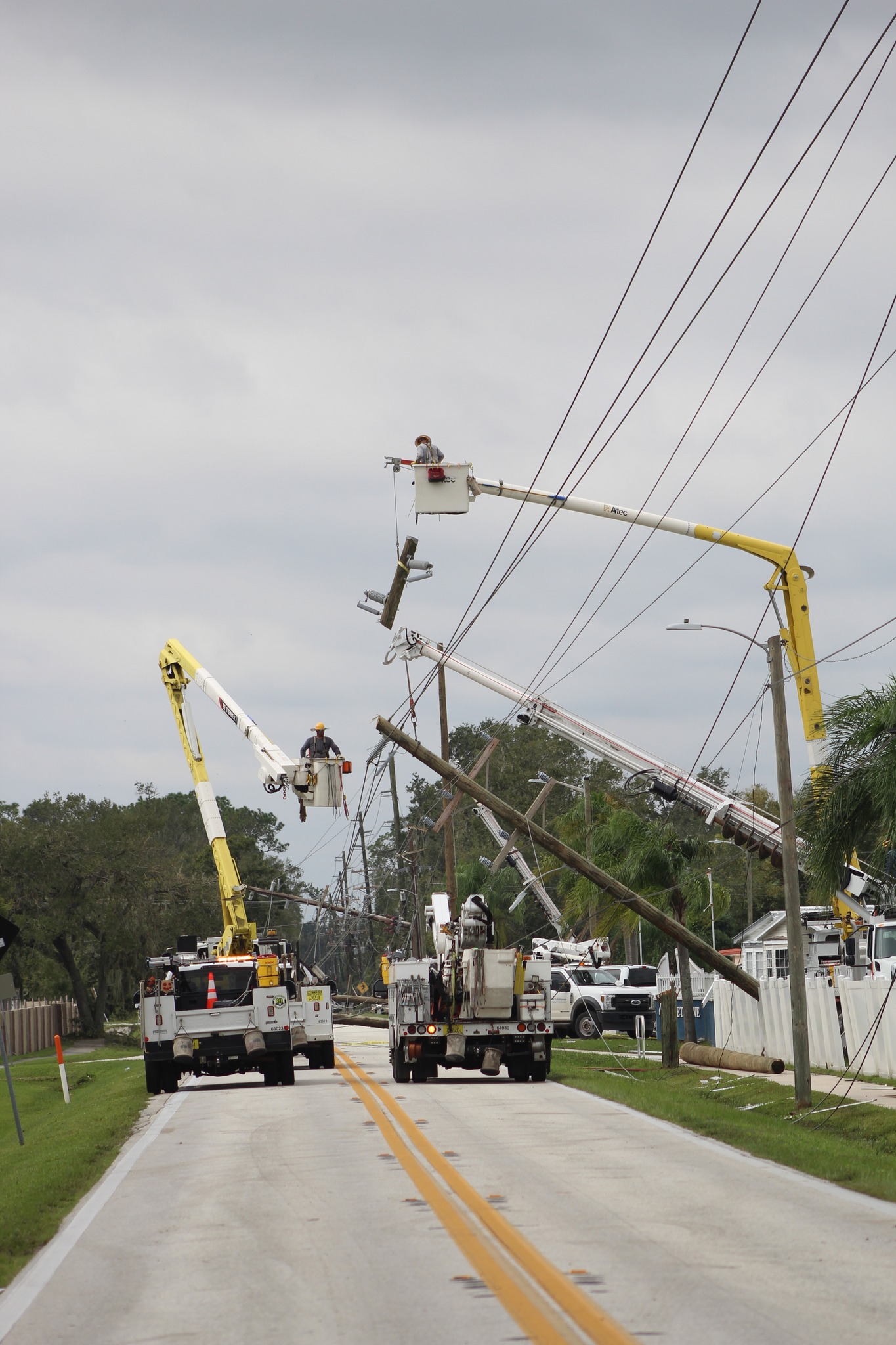There’s nothing that epitomizes the unity across electric utilities quite like mutual aid. In 2024, the show of that unity came together when two powerful hurricanes hit communities throughout the southeastern U.S. in less than two weeks. The results of relatively quick restoration of power to affected areas are not simply a matter of experienced crews lending much-needed hands; they reflect a coordinated effort to optimize travel, logistics, and messaging across an extended network.
Here's a look at what some of the key players in public power emergency response and coordination in 2024 had to say about what’s behind the efforts and what they meant for the people involved.
Working Together
Hurricane Helene and Hurricane Milton, which made landfall Sept. 26 and Oct. 9 in Florida, respectively, were a double whammy, sparking widespread power outages throughout the Southeast. But thanks to the Public Power Mutual Aid Network, crews from public power utilities were able to work together to restore service as quickly as possible within the affected communities and extend help to some of the largest investor-owned utilities that were hit hard.
During such crises, the organizations leading the response focus on communicating in a unified fashion, said Tom Kent, president and CEO of Nebraska Public Power District and a public power representative on the Electricity Subsector Coordinating Council, or ESCC.
“There is a unity of effort and unity of messaging that ensures clear communication across sectors,” Kent said. “Messaging and coordination drive the recovery effort.”

The ESCC plans for utilities to help one another with resources during emergencies, which, for larger storms, includes serving as the main liaison between the federal government and the electric power industry. ESCC includes representatives from public power utilities, IOUs, cooperatives, and government organizations to create strategies for sharing resources.
At the local, regional, and national levels, the American Public Power Association and the ESCC develop plans for responding to emergencies. Such plans are tested with simulations before an emergency arises.
“We benefit, our peers benefit, and the whole country benefits. It’s special how the utility sector works to restore power and how they coordinate with the government,” said Kent.
The planning efforts paid off when Hurricanes Helene and Milton struck within two weeks of each other.
First, Helene brought significant storm surges to the Tampa area in Florida before making landfall in the Big Bend region of the state, then Milton wrought damage in the Tampa area again, said Amy Zubaly, executive director of the Florida Municipal Electric Association, the statewide trade association that represents Florida’s 33 public power utilities. Zubaly is also a state coordinator for the mutual aid network, putting out calls for line workers across the country when needed.
“All of those areas were already rain-heavy and some of them had substantial damage from Helene prior to Milton making landfall just south of the Tampa Bay area just two weeks later,” she said.
After Helene struck, about 300,000 Florida public power customers were without power. All in all, about 1.2 million customers experienced outages from the hurricane.
Within 48 hours of Helene’s landfall, 95% of public power customers that had experienced outages had power restored, with the help of more than 350 lineworkers brought in from 11 states.
When Hurricane Milton barreled into Florida two weeks after Helene, its eye was focused on the central part of the state, which is home to the largest concentration of Florida’s public power communities, said Zubaly. The morning after Milton made landfall, 3.4 million customers experienced outages, with more than 280,000 from Florida public power utilities.
FMEA and its members needed extra assistance and mobilized 2,500 workers, including its own workforce, public power mutual aid, and contractors. “We brought in about 850 public power personnel from 23 states to help,” said Zubaly. “All hands that were able to help restore power helped. Our workforce was pretty strong.”
Within four days, 95% of public power customers had their service restored.
During storms like Helene and Milton, public power organizations are generally able to restore power more quickly than IOUs or cooperatives in the same area, Zubaly said.
“If you have one county that has three different service providers, if you look at the data, public power typically restores power about a day, potentially two days, faster than the other service providers,” she said.
According to the Energy Information Administration, in 2023, public power utility customers experienced more than 200 minutes (or about 3.5 hours) less outage time during major events than the average utility customer. While major events are, by definition, out of the norm, the data over the past decade is pretty consistent in showing that public power customers get restored hours quicker than customers of other utility types.
This is because the line crews generally don’t have to drive as far to reach the impacted areas. Since public power systems often operate over a smaller footprint, there are also usually fewer miles of lines that can be affected.

Photo courtesy Florida Municipal Electric Association
Building Relationships
Restoration efforts are generally not a result of spur-of-the-moment calls among strangers; public power utilities work throughout the year to prepare for emergencies. Since Zubaly began her role as mutual aid coordinator in 2017, she has joined APPA’s mutual aid calls and has become well acquainted with other mutual aid coordinators across the country.
“I have gotten to know all these people over the years. I consider them my friends, in addition to being my colleagues,” she said. “When we’re faced with the threat of a hurricane, small or large scale, I can put out several text messages and within 24 hours I will have hundreds of resources heading our way to assist. That’s a testament to the strong relationships we’ve formed in the mutual aid group. It’s a beautiful thing.”
Nicholas Whitley, the mutual aid coordinator for North Carolina and supervisor of safety and training for ElectriCities of North Carolina, a joint action agency that provides power and supplies critical services to public power utilities in the Southeast, had a similar experience. “Everyone on the mutual aid committee holds meetings, we get together and have meals and develop that relationship,” he said. In particular, he works closely with Jimmy Bagley from the City of Rock Hill, South Carolina, who serves as the mutual aid coordinator in the neighboring state.
“When a storm hits, I can call Jimmy in South Carolina. Jimmy and I have a friendship and everyone is on the same page,” Whitley said.
Taking advantage of the mutual aid network, utilities can triple or quadruple their workforce. A small public power utility might have a line crew of three or four people, but it has the ability to bring in 30 to 50 extra lineworkers if devastated by a storm.
In 2018, Hurricane Michael struck the Florida Panhandle, devastating the systems of some small public power utilities that had only a handful of line workers. Zubaly sent about 100 mutual aid personnel to each of those small communities in the area.
“It would have taken a small crew of four people a really long time to rebuild a system,” she said.
In addition to helping out smaller utilities, the mutual aid system responds to surprises like the one Whitley experienced after Hurricane Helene made an unexpected move into North Carolina, devastating parts of the state.
“Helene was brutal for us,” he said. “Our members typically don’t travel to Florida unless they know North Carolina is in the clear. We want to know our state is OK before helping out others.”
After Helene traveled from Florida up to North Carolina, Whitley started getting requests for crews to help in North Carolina. The utilities wanted to take advantage of their mutual aid agreements with ElectriCities.
But many of the North Carolina-based crews were restoring power in Florida.
“I didn’t have time to send out a mass email,” Whitley said. “I started making phone calls to our biggest utilities willing to travel.”
Generally, when he’s responding to such requests, Whitley has to be aware of which utilities have released his personnel from other jobs so he can assign them to different utilities — a job that requires good communication and organization. Utilities will call to tell him they’ll be releasing their crew the next day. He’ll then reach out to members needing help, offering the released crews.
“I try to set up a meeting with the utilities requesting help to say, ‘Hey, we can help you; we need to know the system voltage. Is there a place for workers to stay, any special equipment needed?’” he said.
To restore power after Hurricane Helene, Whitley dispatched more than 30 crews in North Carolina. The mutual aid network met the needs of all public power utilities in North Carolina that requested help, and the last crew returned home after about 10 days, he said.
After public power utilities have their power restored, Whitley will send crews to Duke Energy and rural electric cooperatives. But public power is the first priority.
In spite of the challenges of Hurricanes Helene and Milton striking within two weeks of each other, public power utilities were successful in helping each other out, thanks in large part to the connections and friendships mutual aid leaders have forged.
“With Hurricanes Helene and Milton, public power responded, and they responded quickly. Once again, they came from far and wide and they made it happen,” said Kent. “I can’t overstate how impressive it is to see the mutual aid system in action.”

